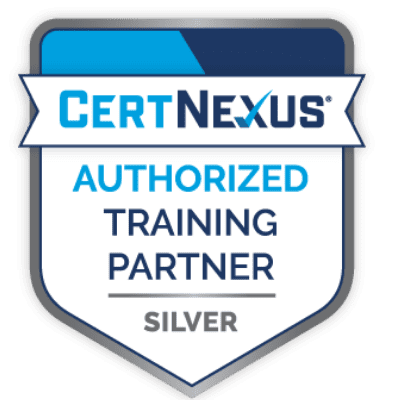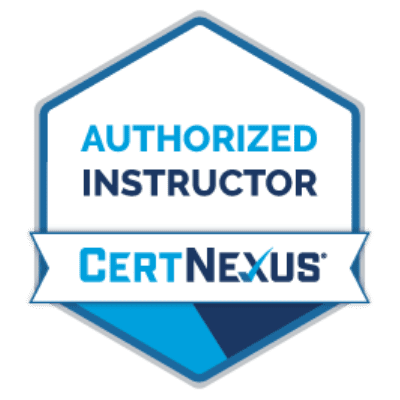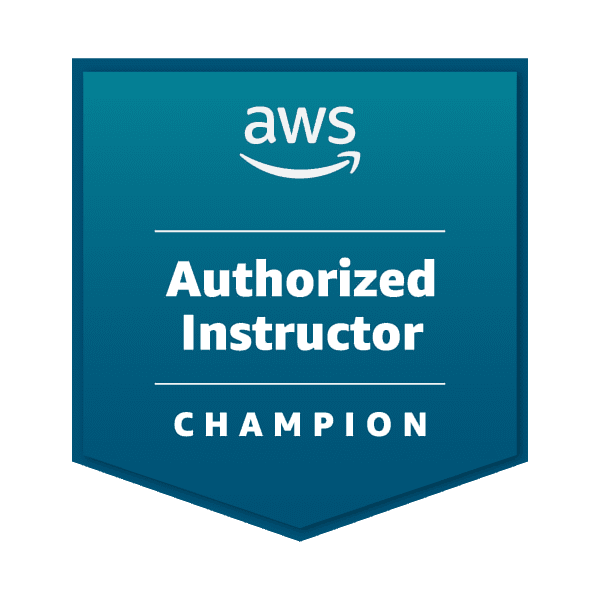CyberSAFE-510 Is Here: What’s New and Why It Matters
Cybersecurity awareness training just took a meaningful leap forward. The new CyberSAFE-510 (CBS-510) exam and...
Security Engineering on AWS is an intensive, practitioner-focused program designed for professionals who must secure modern workloads at scale. Over three days, participants progress from strategic foundations to deep technical implementation and operational excellence, combining lecture, demonstration, and guided labs to build real-world competency.
We begin by grounding every decision in the AWS Shared Responsibility Model and the Well-Architected Security Pillar. You will learn how these frameworks translate into day-to-day architecture choices: defining account boundaries, gating access to production, and selecting the right control for the risk. We then build a multi-account guardrail strategy using AWS Organizations and service control policies (SCPs) to enforce high-impact controls centrally. You will examine patterns for identity federation and single sign-on with AWS IAM Identity Center, and you will craft least-privilege policies in AWS Identity and Access Management (IAM) using permission boundaries, resource-based policies, and condition keys to minimize blast radius.
Data protection is next. We compare key management options—AWS KMS, CloudHSM, and third-party integrations—and practice envelope encryption patterns for S3, EBS, EFS, and RDS. You will design data-in-transit protections with TLS, AWS Certificate Manager, and private certificates, including how to rotate keys and certificates safely. We discuss secrets handling with AWS Secrets Manager and Parameter Store, including rotation patterns tied to RDS and external systems.
Network security moves from theory to implementation with VPC design, subnets, routing, and hybrid connectivity. You will learn to layer controls using security groups, network ACLs, VPC endpoints, and PrivateLink to keep traffic private and minimize exposure. We explore edge protections using AWS WAF and AWS Shield, including rule design to mitigate common attack patterns and architectural approaches for DDoS resilience.
Detective controls and continuous assurance form the backbone of day two and three. You will build a centralized logging architecture that captures CloudTrail, VPC Flow Logs, and service logs into immutable storage with lifecycle governance and access separation. We leverage AWS Config for conformance packs, Amazon GuardDuty for continuous threat detection, AWS Security Hub for control aggregation, and Amazon Inspector for vulnerability findings—then wire them together with EventBridge and Systems Manager for automated, auditable remediation. You will learn how to tune findings to reduce noise without diminishing visibility.
Operational security is addressed through incident response, change control, and evidence collection. We develop a cloud-ready incident response playbook that uses tags, snapshots, isolated VPCs, and IAM break-glass roles. You will practice containment tactics, forensics-friendly snapshotting, and post-incident learning loops. We also cover governance considerations—how to document control intent, demonstrate control operation to auditors, and map AWS features to common frameworks (e.g., SOC 2, ISO/IEC 27001, PCI-DSS) without over-engineering.
Throughout, the course emphasizes automation and repeatability. You will see how to codify guardrails and controls with infrastructure as code, how to use change management patterns that keep security in lock-step with delivery, and how to establish metrics that prove the value of your security program. Each module closes with exam-style questions to reinforce learning and support preparation for the AWS Certified Security – Specialty (SCS-C02) exam.
By the end of day three, you will have a clear blueprint for implementing identity, data, network, and detective controls across multiple accounts, plus the know-how to respond confidently to security events and communicate effectively with auditors and leadership. You will leave with reusable templates, checklists, and a pragmatic roadmap to mature your organization’s AWS security posture.
Security engineers, cloud security architects, and DevSecOps practitioners
Solutions architects responsible for risk management and compliance in AWS
SOC analysts and incident responders expanding into cloud operations
Technical leaders seeking to align security controls with business objectives
Day 1 — Foundations & Identity
The AWS Security Landscape: Shared Responsibility, Well-Architected Security Pillar
Multi-Account Strategy: AWS Organizations, SCPs, account vending patterns
Identity at Scale: IAM roles, permission boundaries, resource policies, IAM Identity Center (SSO)
Secrets & Certificates: Secrets Manager, Parameter Store, ACM
Lab: Build least-privilege access and federated sign-in for a multi-account environment
Day 2 — Data, Network & Edge Protection
Data Protection: AWS KMS key strategy, envelope encryption for S3/EBS/EFS/RDS, rotation and governance
Network Security: VPC design, security groups vs. NACLs, VPC endpoints, PrivateLink
Edge Security: AWS WAF managed/custom rules, AWS Shield considerations
Lab: Encrypt a workload end-to-end and restrict traffic to private paths only
Day 3 — Detection, Response & Assurance
Centralized Logging & Monitoring: CloudTrail organizations, log integrity, analytics patterns
Continuous Assurance: AWS Config, conformance packs, Security Hub, Inspector, GuardDuty
Automated Remediation: EventBridge rules, SSM Automation documents
Incident Response: Containment, evidence, snapshots, isolation VPCs, post-incident reviews
Lab: Threat-to-remediation pipeline with alert triage and automated response
Capstone: Control mapping and executive-ready security roadmap
Working knowledge of AWS core services (compute, storage, networking) and basic Linux/CLI familiarity
Prior experience designing or operating workloads in AWS (6–12 months recommended)
Understanding of fundamental security concepts (authentication, authorization, encryption, logging)
Helpful but not required: experience with infrastructure as code and CI/CD practices



Book a free 50-minute consultation and discover how your organization can optimize its learning strategy.
Cybersecurity awareness training just took a meaningful leap forward. The new CyberSAFE-510 (CBS-510) exam and...
AWS has officially announced its newest addition to the certification family — AWS Certified Generative AI Developer – Professional. A full AWS Generative AI Developer – Professional study guide and instructor-led beta preparation course will launch here soon.